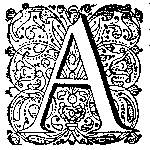Prelingual Deafness and the Manualist/Oralist Controversy in the Dutch Republic
The Case of the Groningen Painter Jan Jansz. de Stomme
DOI:
https://doi.org/10.51750/emlc15993Keywords:
deafness, muteness, Reformed Church, oralism, manualism, Dutch paintingAbstract
This essay discusses the life and career of the prelingually deaf painter Jan Jansz. de Stomme (1615-1658) in the context of early modern debates on deafness, oral speech, and gestural communication. A son of a Franeker burgomaster, Jan moved to Groningen in 1643, where he became known for his portraits of Frisian aristocracy, got married twice, and lived in wealth in a prestigious neighbourhood. The theologian Samuel Maresius and scholar Anton Deusing described Jan’s devout attendance of services in the Reformed Church, which defended his right to participate in Holy Communion. A similar account was given in a family chronicle written by Jan’s grandnephew, who further specified that Jan joined the church as a communicant member expressing his understanding of the doctrine through gestures. By examining these various sources, I argue that church membership played an important role in bolstering Jan’s social status and undermining the alleged intellectual and mental inferiority of prelingually deaf people. I further show that despite the belief that oral speech was a sign of intelligence necessary to perform functions deemed normative, Jan established a successful career communicating only through gestures.
Downloads

Published
Issue
Section
License
Copyright (c) 2024 Barbara Kaminska

This work is licensed under a Creative Commons Attribution-NonCommercial 4.0 International License.





